

Yorktown
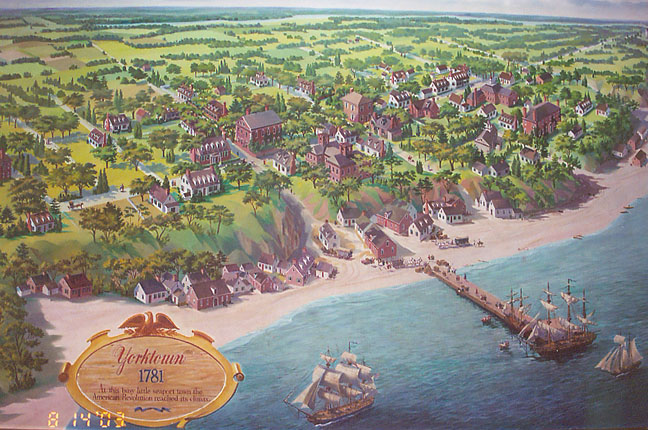
a painting of Yorktown 1781
Yorktown, Siege of, name applied to two different military actions, one at the end of the American Revolution, the other during the American Civil War. Both battles were fought at Yorktown, Virginia.
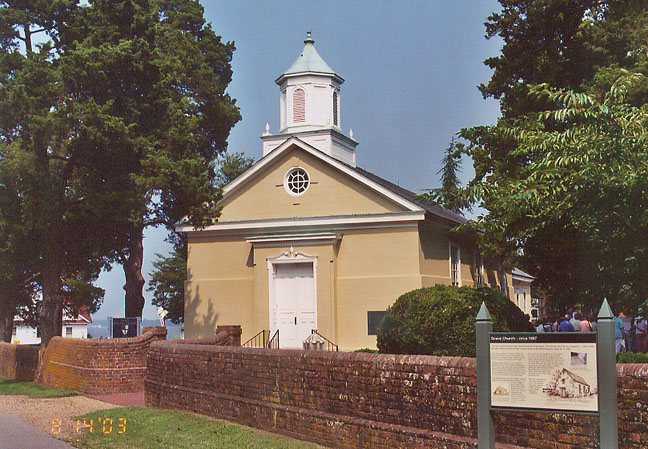
the church
(seen on the right in the above town painting)
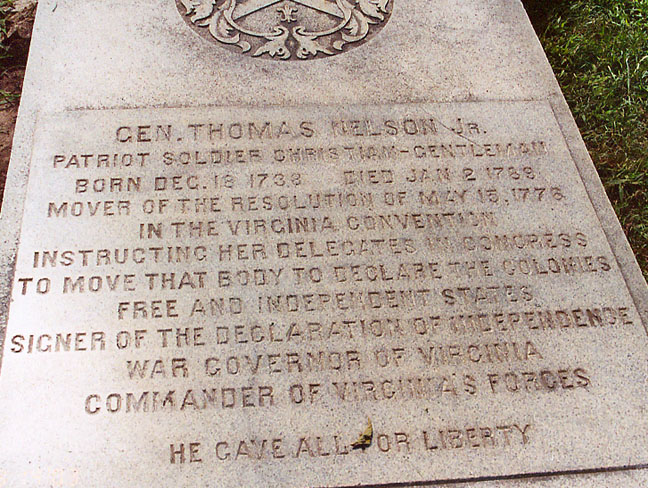
patriot's grave
![]()
Thomas Nelson Jr.'s house
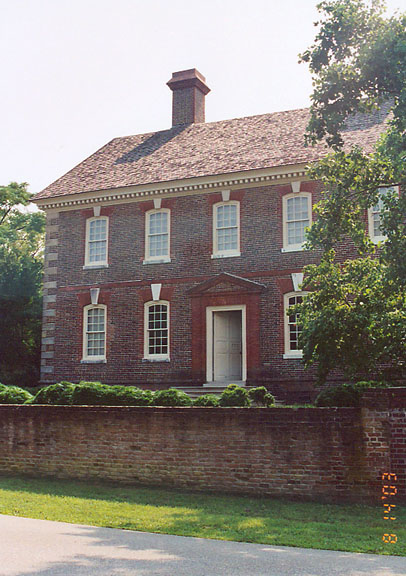
seen on the center left of the above painting
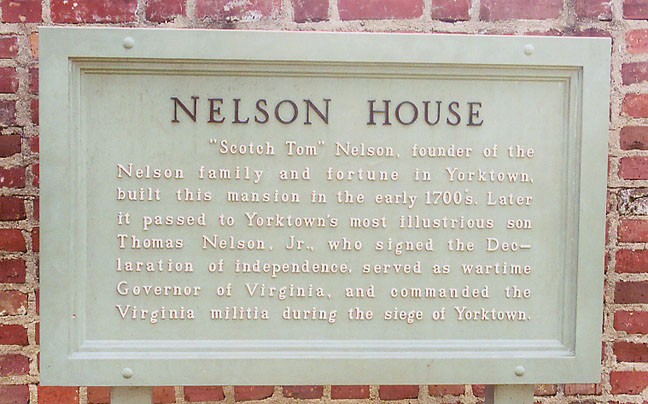
marker
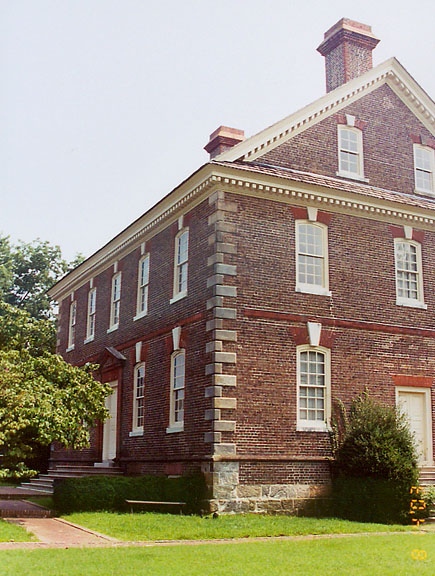
the residence
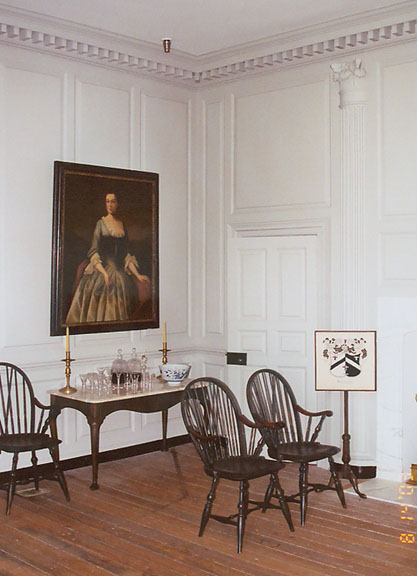
the interior
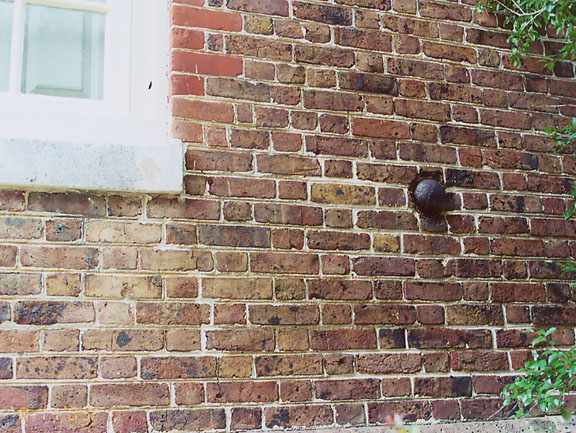
cannon ball lodged in the house during the siege
![]()
Other residences from Colonial Yorktown
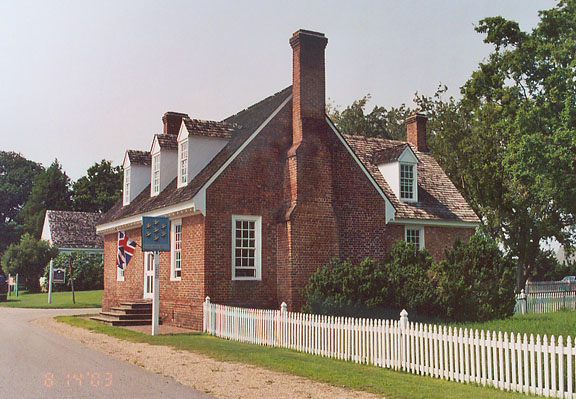
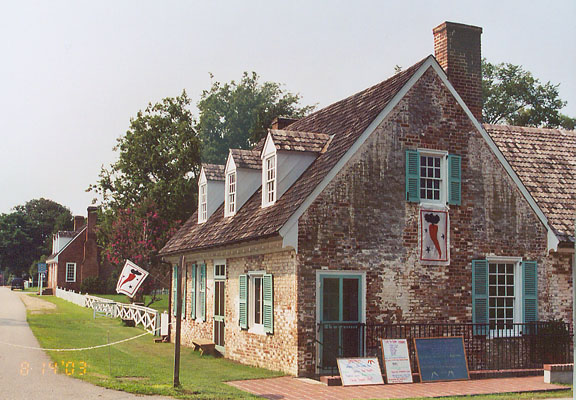
now used as a tavern
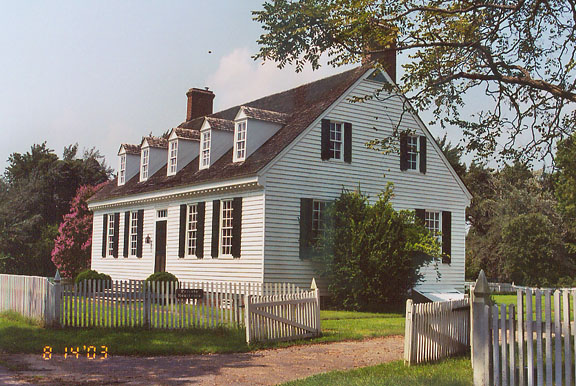
![]()
SIEGE OF YORKTOWN (1781)
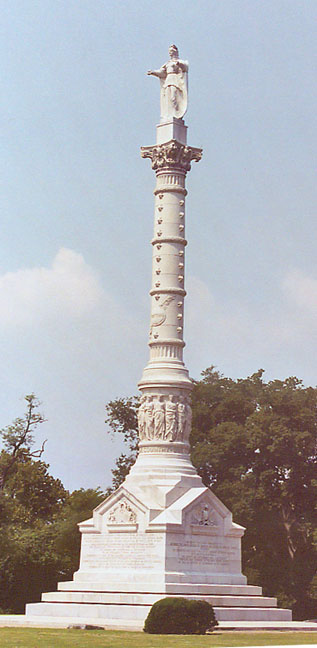
the monument
Final major action of the American Revolution, concluded by the surrender of British troops on October 19, 1781. During the action American and French land forces under General George Washington, collaborating with a French fleet commanded by Admiral François Joseph Paul, comte de Grasse, surrounded the British under Lieutenant General Charles Cornwallis, second in command of the British forces in North America. The siege lasted 20 days. Cornwallis's surrender resulted in the resignation of the British prime minister Lord Frederick North and brought to power more conciliatory leaders. The latter accepted the terms of the Treaty of Paris, signed on September 3, 1783, which officially ended the war.
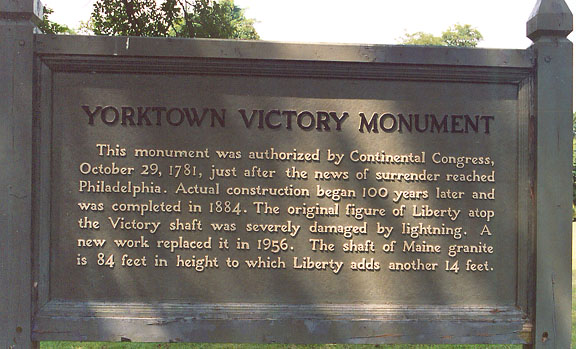
Before the action at Yorktown, Cornwallis, without orders, had moved north from
North Carolina to link up with British forces in Virginia and launch a
full-scale offensive. The British drove American militia, commanded by the
Marquis de Lafayette, out of Richmond, but they were soon restrained by the
British commander in North America, General Sir Henry Clinton, who disapproved
of Cornwallis's unauthorized offensive. Clinton ordered Cornwallis to establish
a defensive position on Chesapeake Bay. In August the British fortified Yorktown
and the town of Gloucester, on the opposite side of the York River. Lafayette
and a small force of Americans, who had followed Cornwallis to Yorktown,
notified Washington, encamped in West Point, New York, of the British position
and preparations.
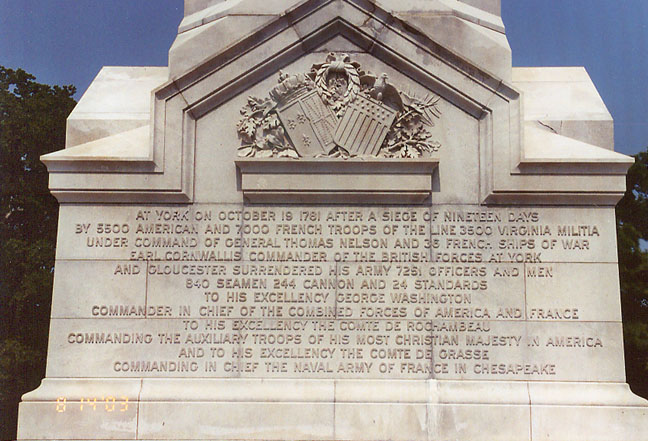
After learning that Admiral de Grasse was sailing for the Chesapeake with 29
warships, Washington decided to attack Cornwallis. Leaving some 2500 troops
behind to defend the forts along the Hudson River and to mislead the British
command in New York City about his main objective, Washington set out for
Virginia on August 21 with about 7000 men, including French regular troops under
the Comte de Rochambeau. They arrived at Williamsburg on September 14, 1781.
Meanwhile, the French fleet under de Grasse had driven off a British fleet under
Admiral Thomas Graves and succeeded in blockading Chesapeake Bay, thus
preventing a possible British escape. In addition, 3000 French troops had
disembarked from de Grasse's ships and joined Washington's army.
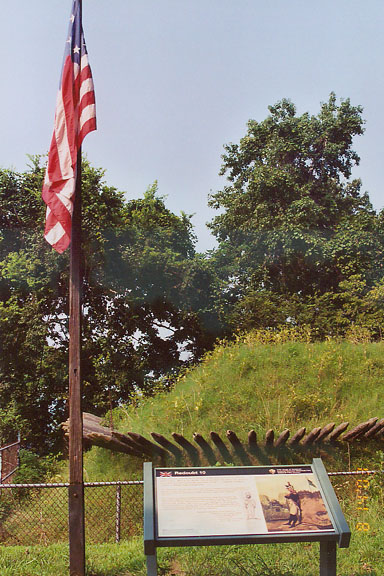
former British stronghold (redoubt)
American and French troops reached Yorktown on September 28. Some 16,000 strong, they laid siege to the British positions. American assault forces captured two key British strongholds on the night of October 14, and a British counterattack proved ineffective. Recognizing the hopelessness of his position, Cornwallis requested a truce on October 17 and signed articles of surrender two days later. En route to Yorktown, a British reinforcement of 7000 troops under Clinton had to sail back to New York upon receiving news of the surrender on October 29.
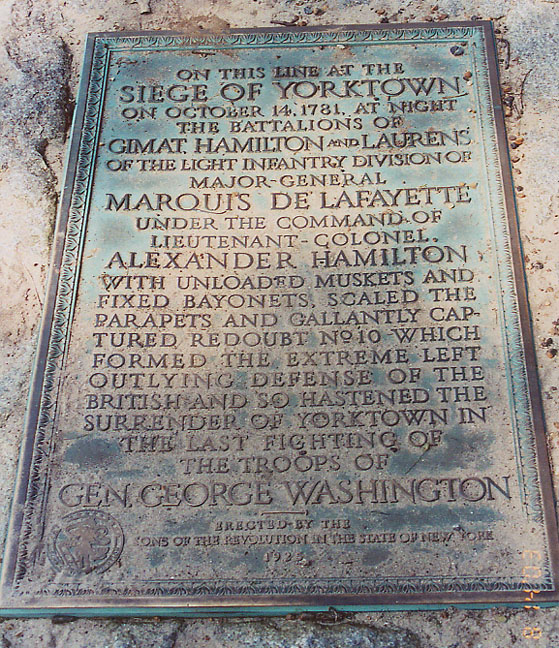
Washington achieved the victory at Yorktown by coordinating his widely scattered
land and sea forces in what is considered one of the most skillful military
operations in history. Although peace was not officially proclaimed until 1783,
after the siege major hostilities virtually ceased in America.
Text from Microsoft Encarta
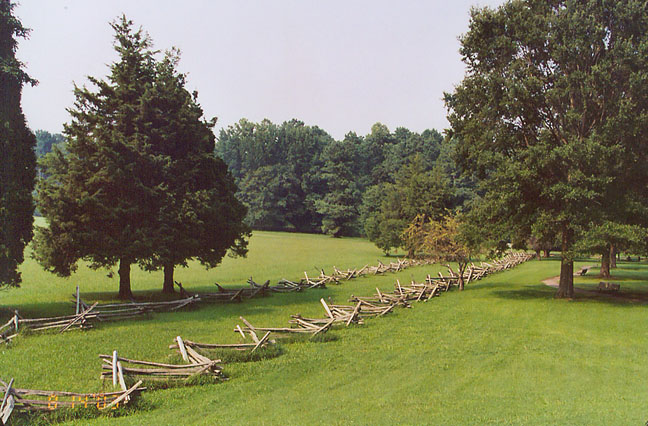
the surrender field

Liberty
![]()
Return to Williamsburg Elderhostel page
![]()